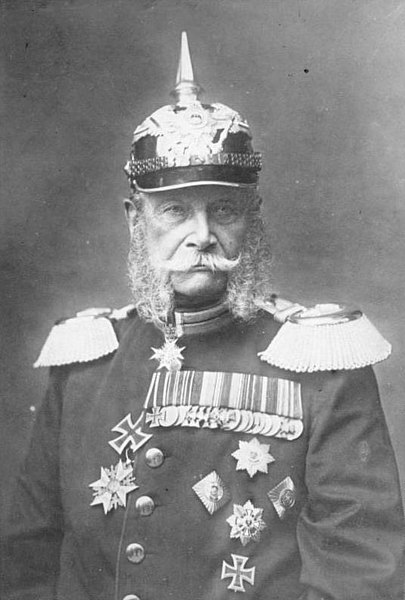The Imperial German Navy or the Kaiserliche Marine was the navy of the German Empire, which existed between 1871 and 1919. It grew out of the small Prussian Navy, which was mainly for coast defence. Kaiser Wilhelm II greatly expanded the navy. The key leader was Admiral Alfred von Tirpitz, who greatly expanded the size and quality of the navy, while adopting the sea power theories of American strategist Alfred Thayer Mahan. The result was a naval arms race with Britain, as the German navy grew to become one of the greatest maritime forces in the world, second only to the Royal Navy.
Major elements of the High Seas Fleet in the early 1910s
Proclamation of Wilhelm I as Emperor of Germany at Versailles, France in 1871
Wilhelm II in German Admiral's uniform in 1913
Alfred von Tirpitz
The German Empire, also referred to as Imperial Germany, the Second Reich or simply Germany, was the period of the German Reich from the unification of Germany in 1871 until the November Revolution in 1918, when the German Reich changed its form of government from a monarchy to a republic.
The German colonial empire in 1914
Chancellor Bismarck
Wilhelm I in 1884
Die Proklamation des Deutschen Kaiserreiches by Anton von Werner (1877), depicting the proclamation of Emperor William I (18 January 1871, Palace of Versailles). From left, on the podium (in black): Crown Prince Frederick (later Frederick III), his father the emperor, and Frederick I of Baden, proposing a toast to the new emperor. At centre (in white): Otto von Bismarck, first Chancellor of Germany, Helmuth von Moltke the Elder, Prussian Chief of Staff.







